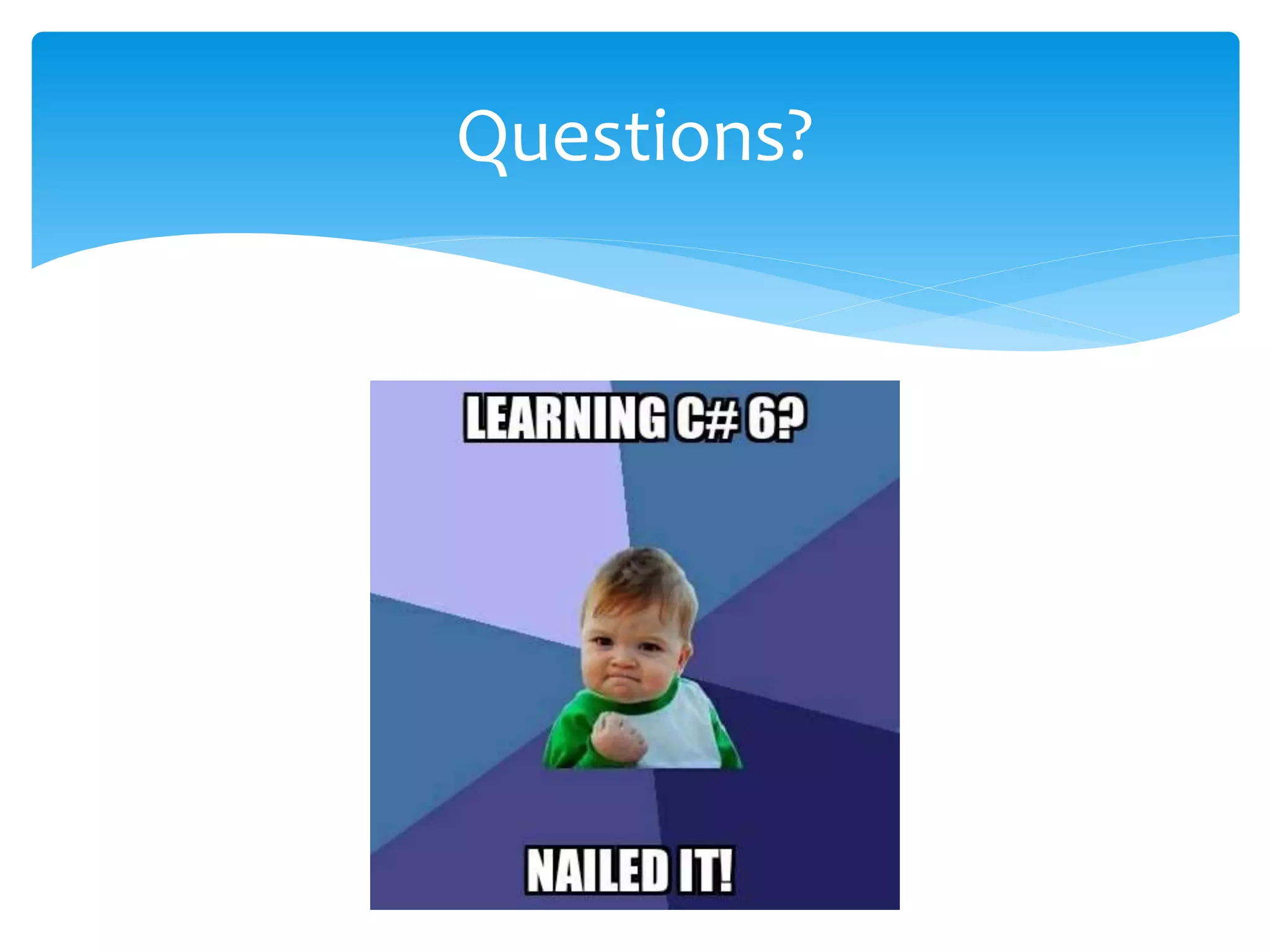The document summarizes several new features in C# 6, including the nameof() operator, auto-property initialization, indexed initializer lists, the using static directive, method and property expressions, string interpolation, enhanced exception filtering, and the null conditional operator (?.). Some key features allow getting a string representation of an identifier with nameof(), initializing auto-properties to non-default values more easily, using indexers for initialization lists, importing static members to simplify code, string interpolation for building strings with values inline, filtering exceptions based on logical conditions, and safely accessing members and indexers of objects that may be null with the null conditional operator. Overall, the new features add syntactic sugar to help reduce boilerplate code and improve readability


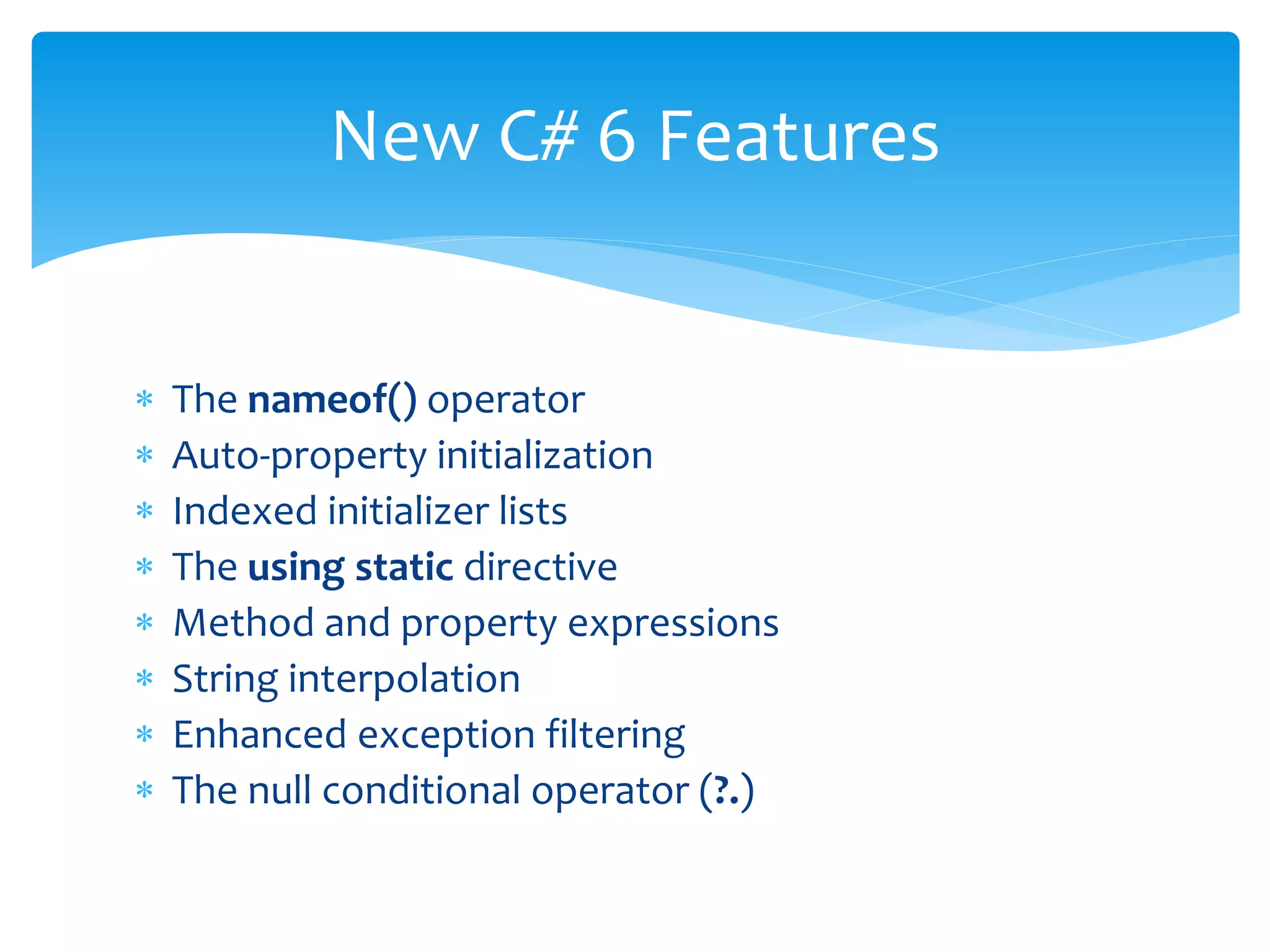

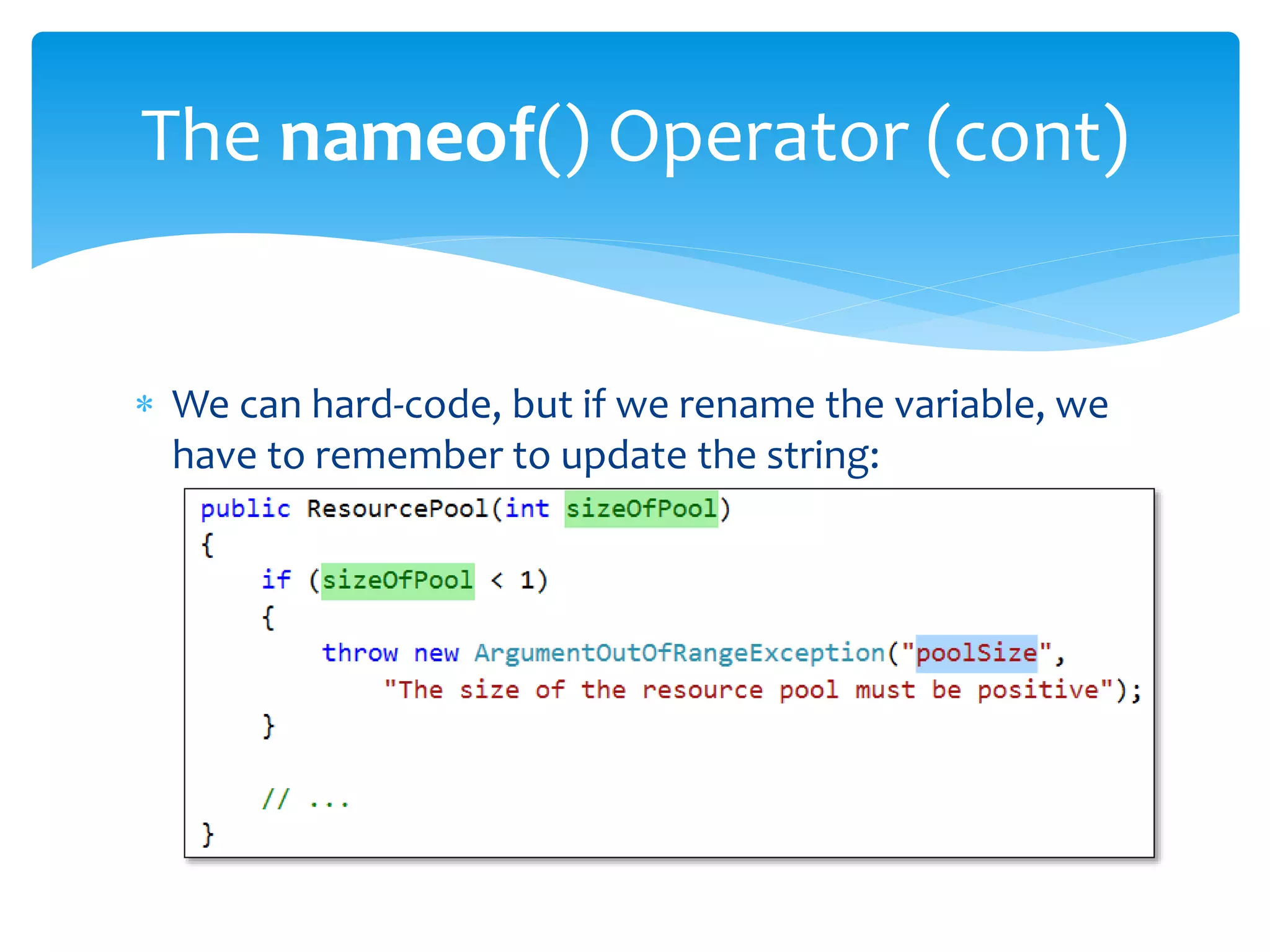

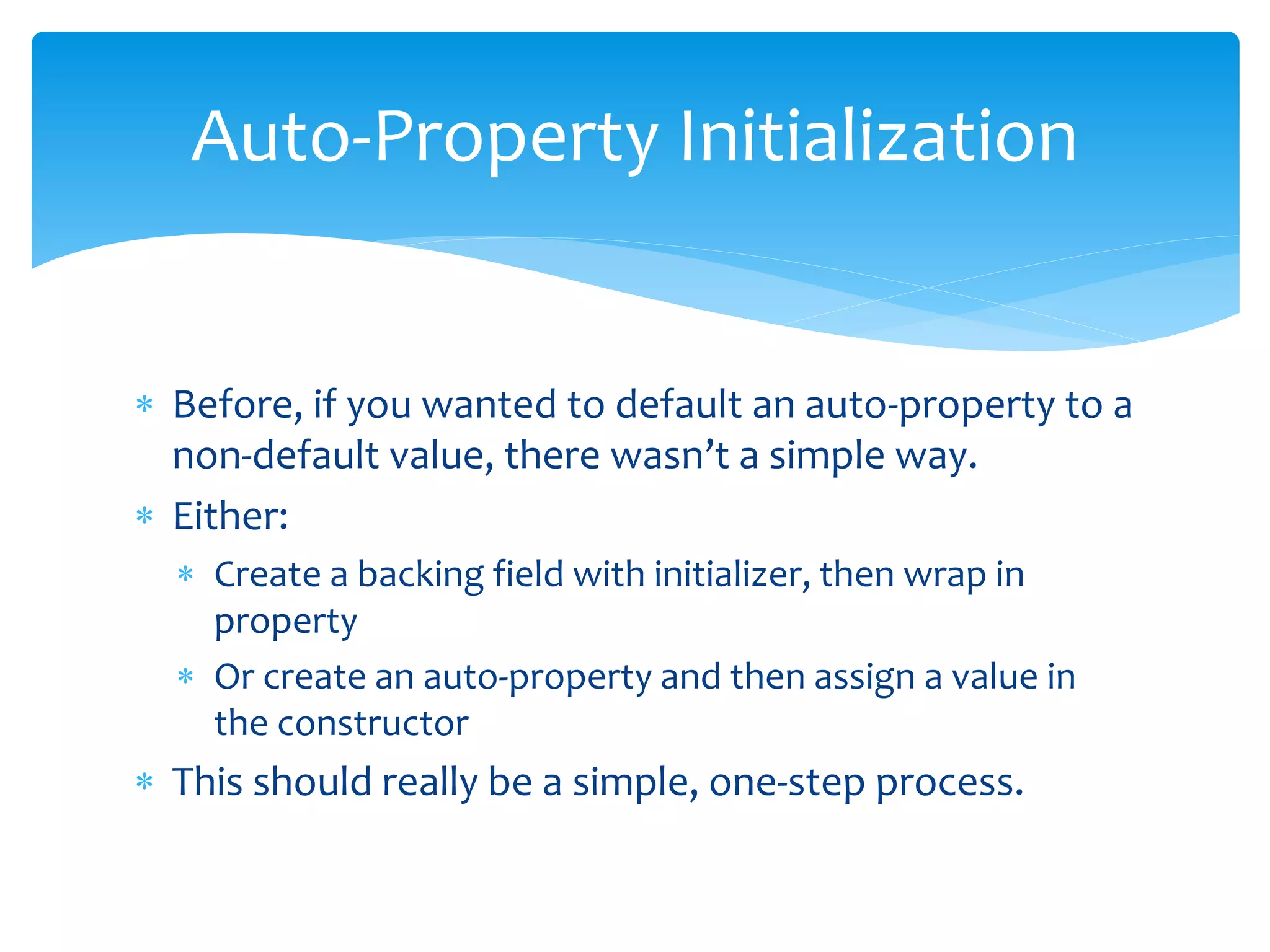
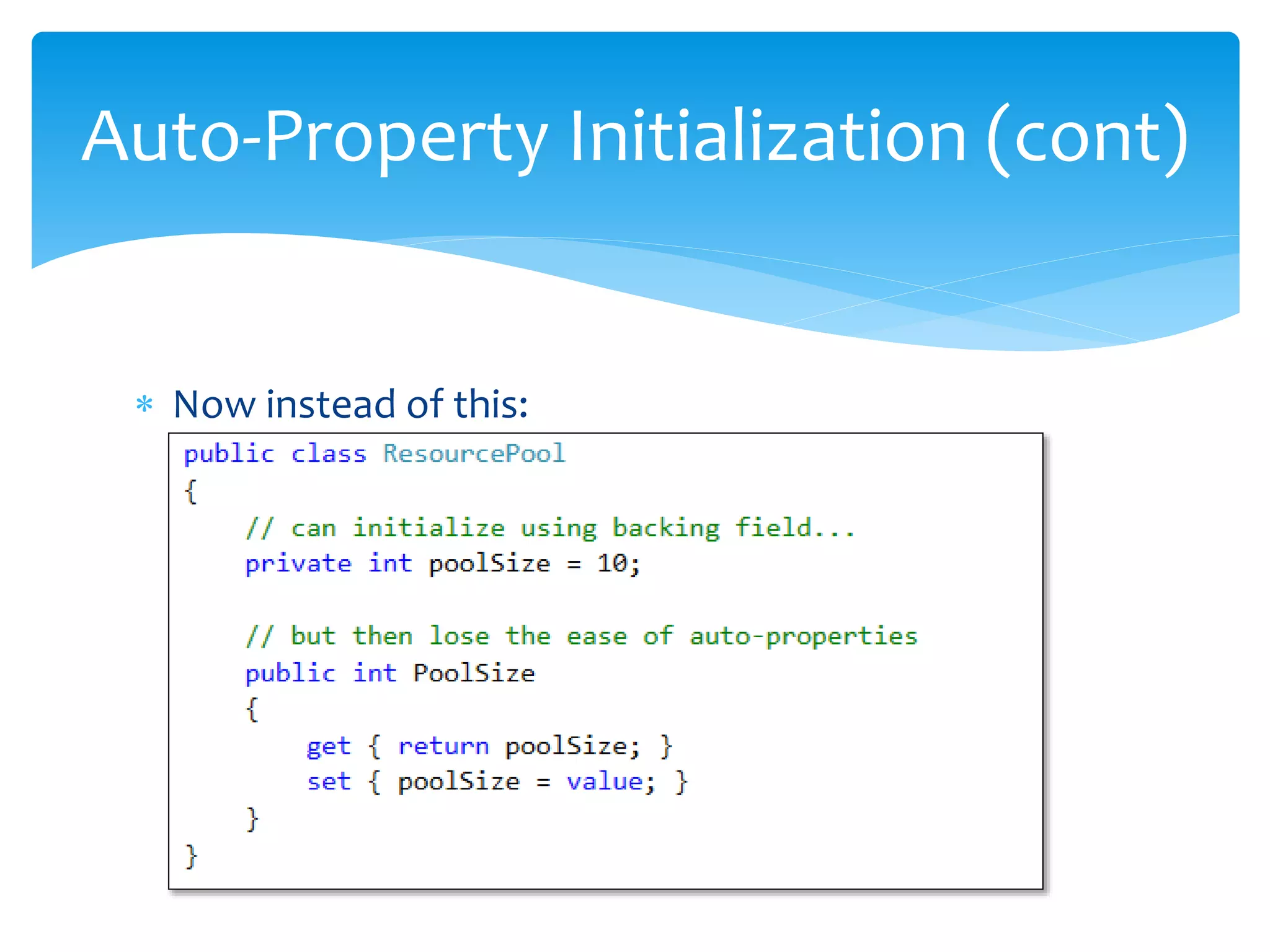
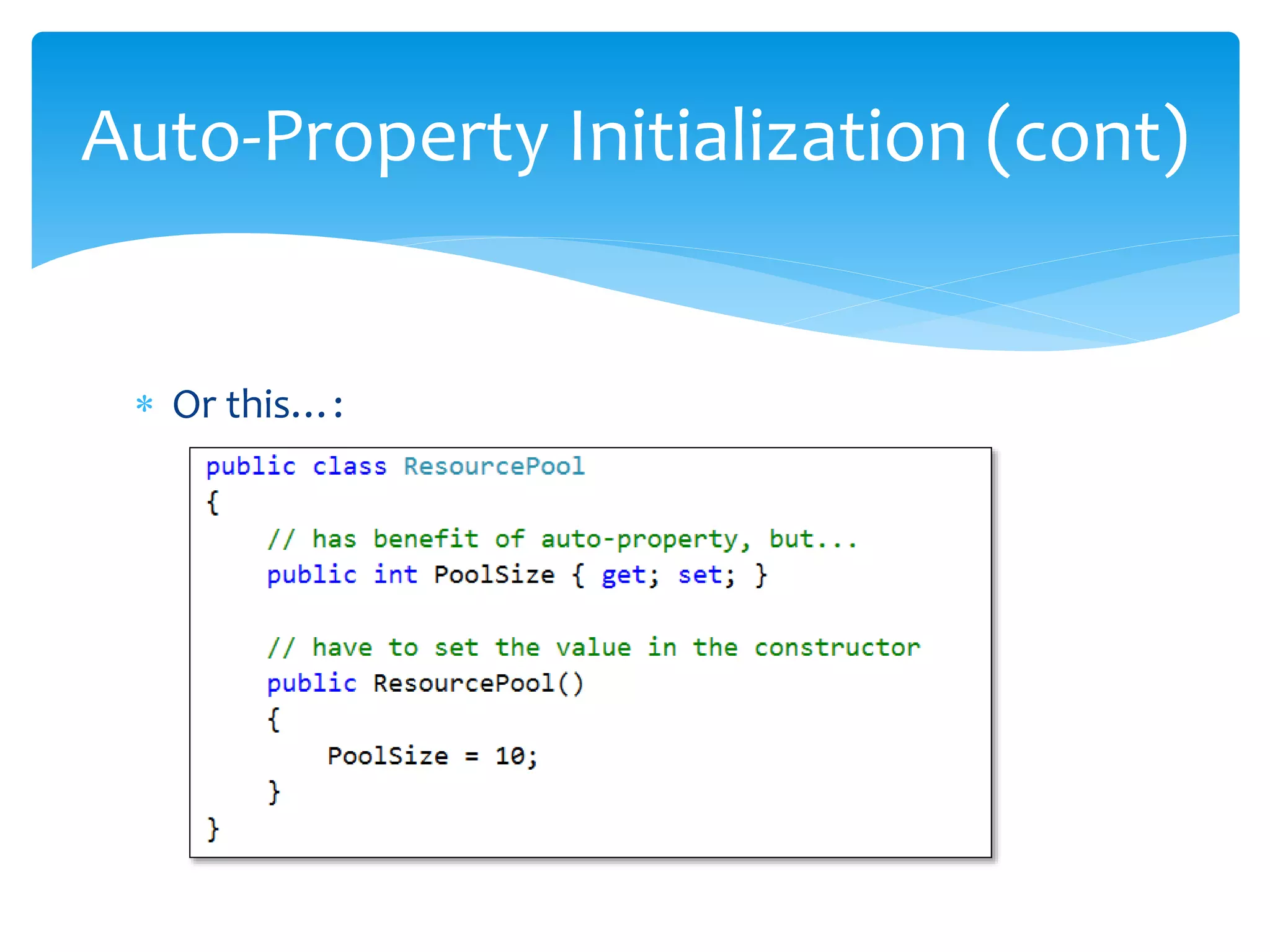
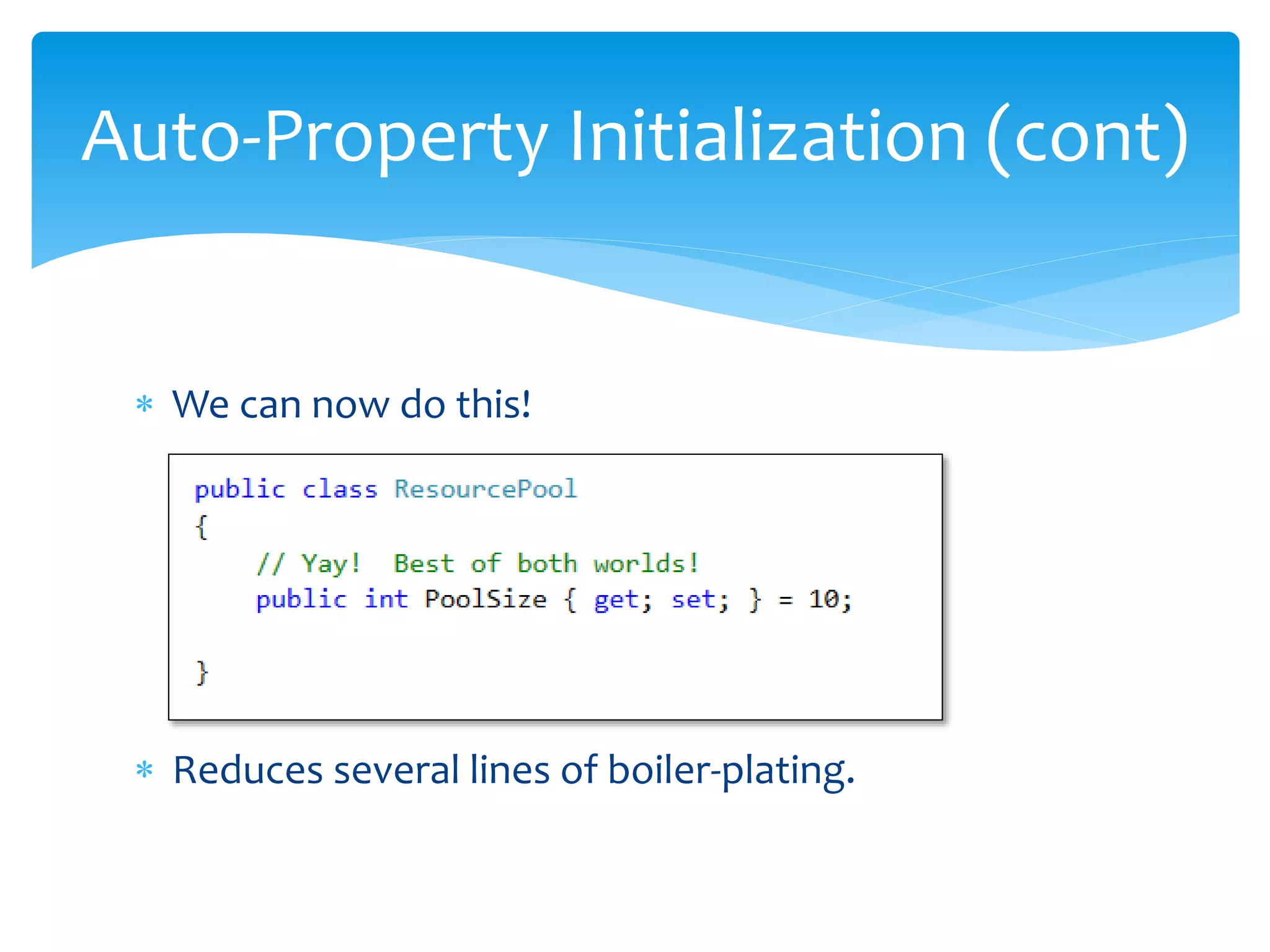

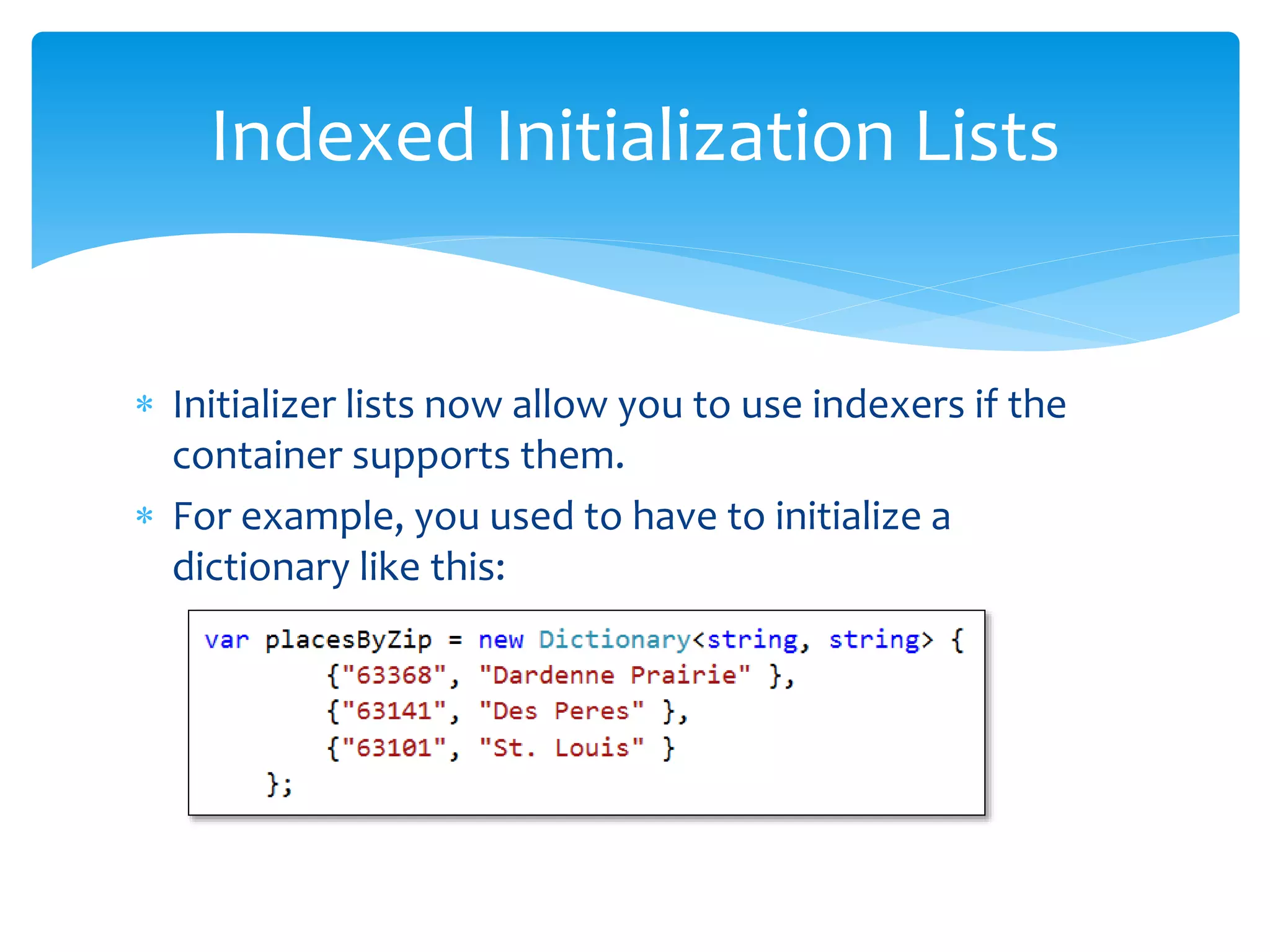
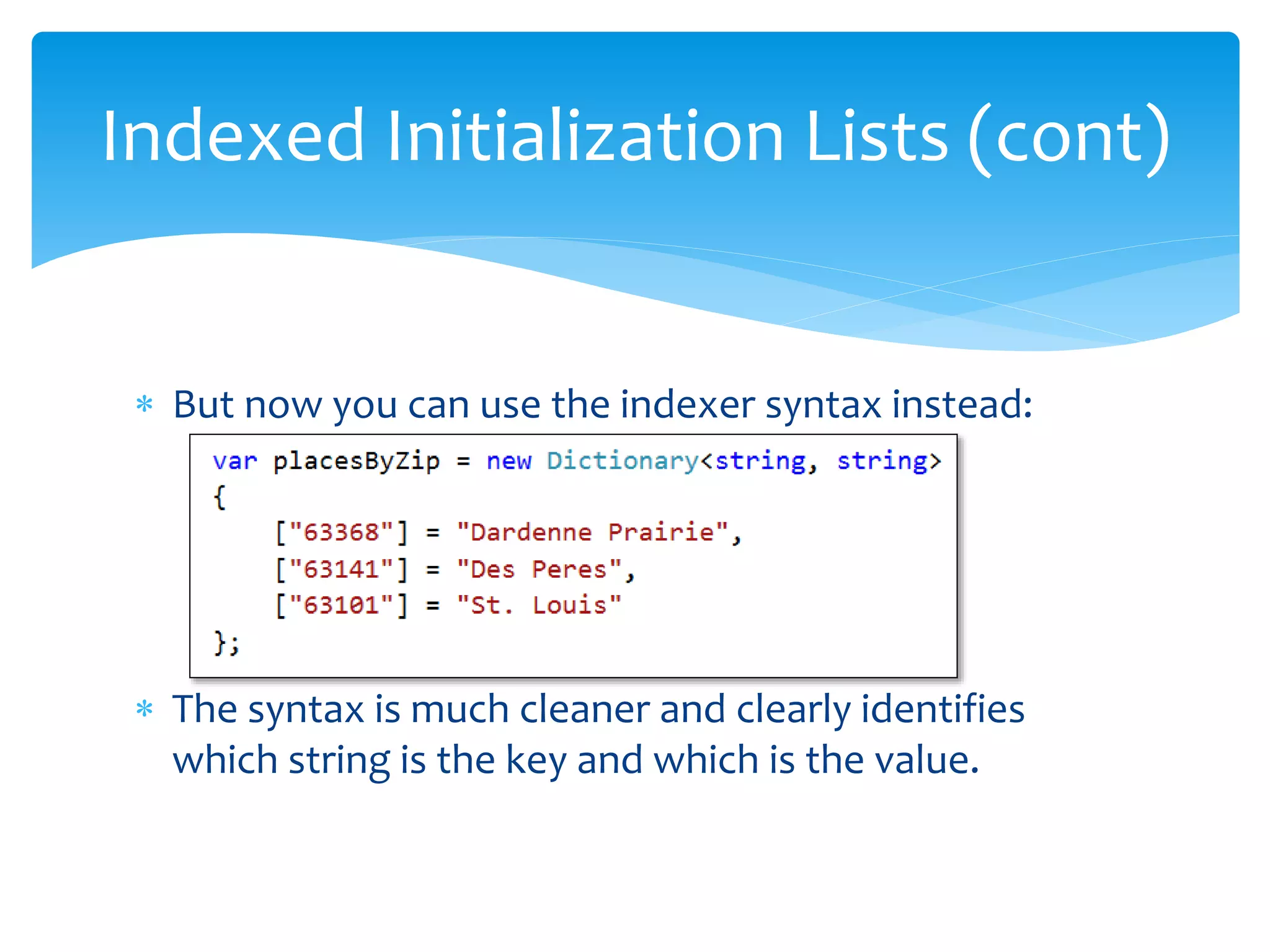

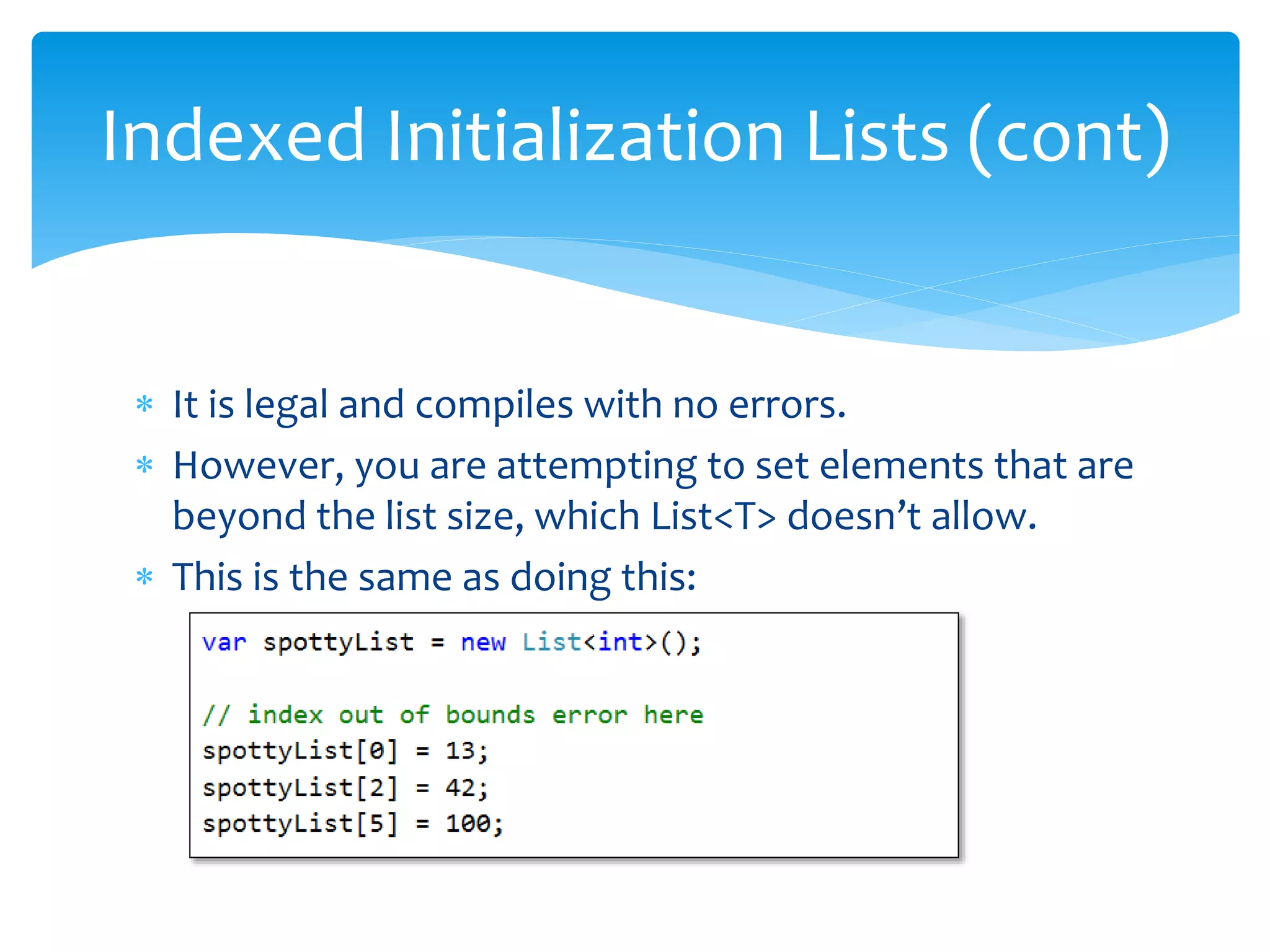
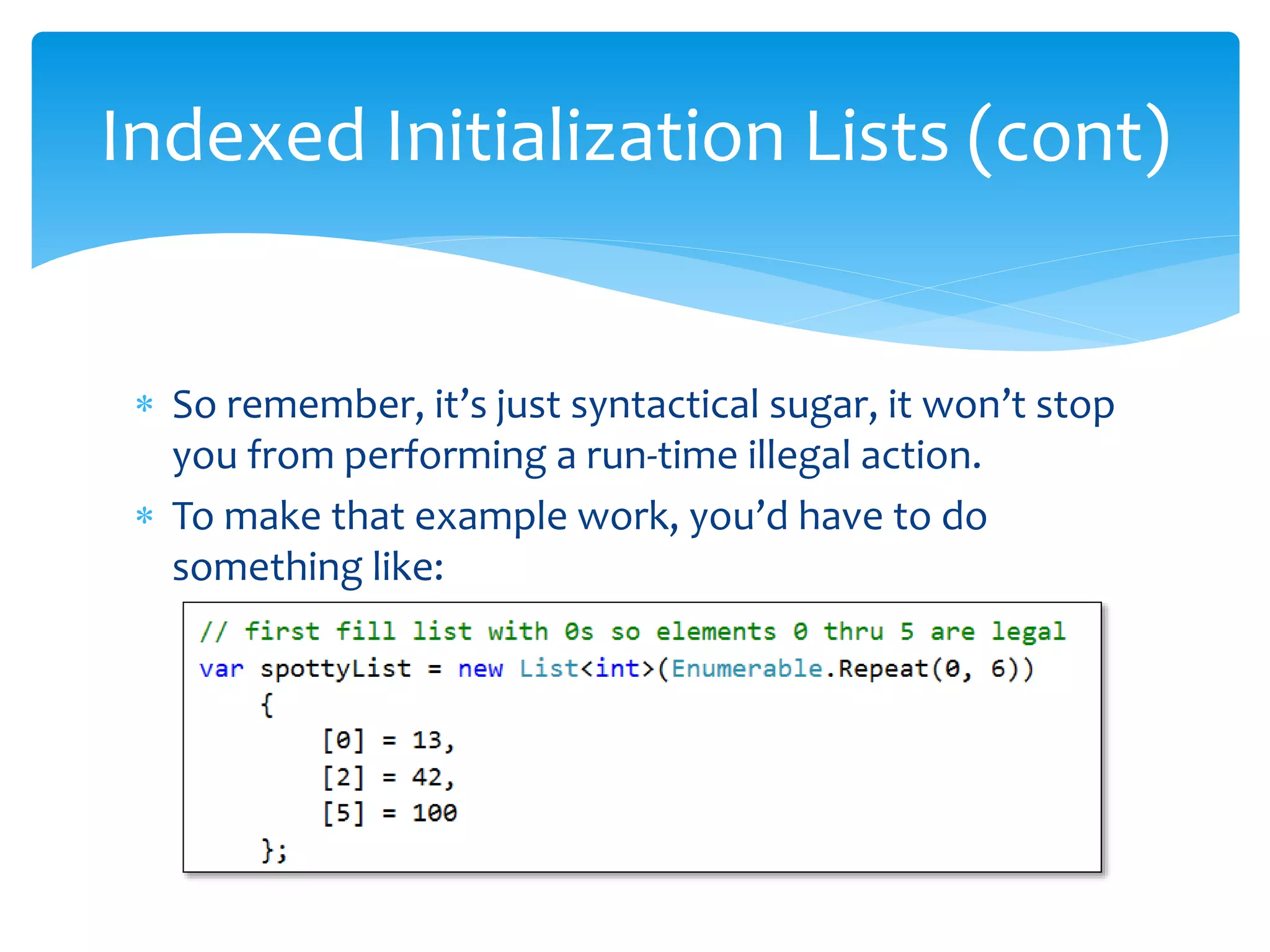




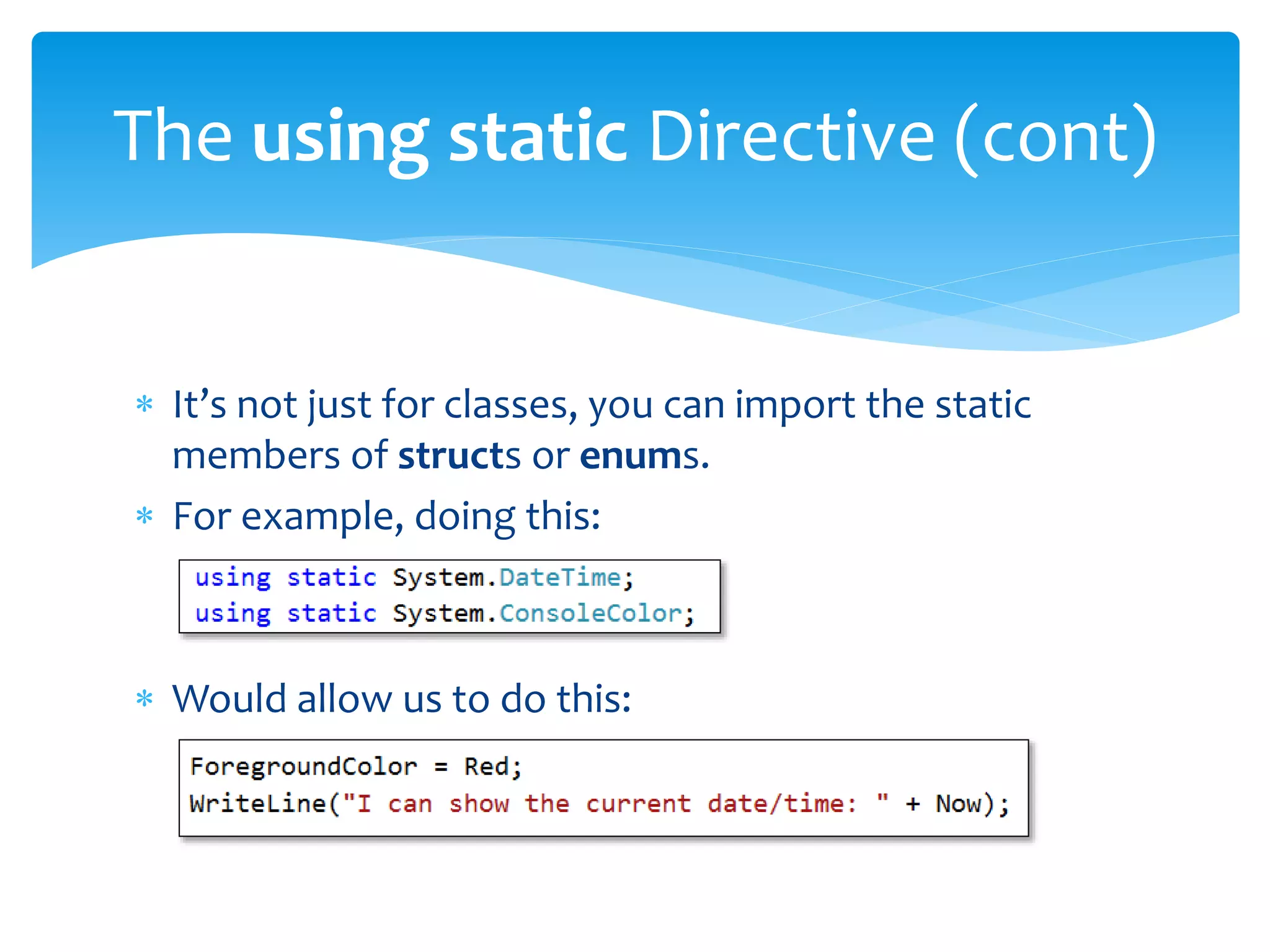



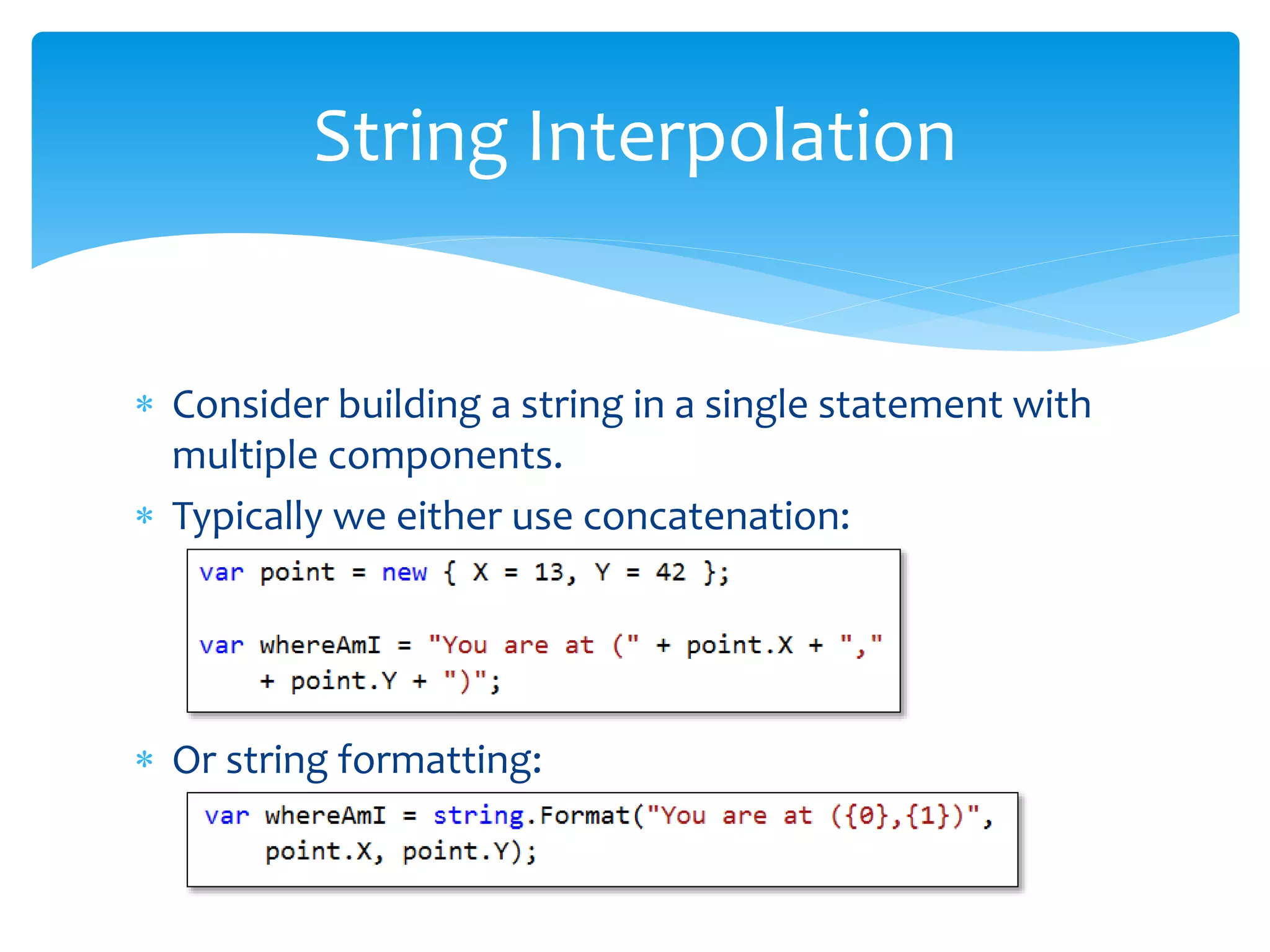



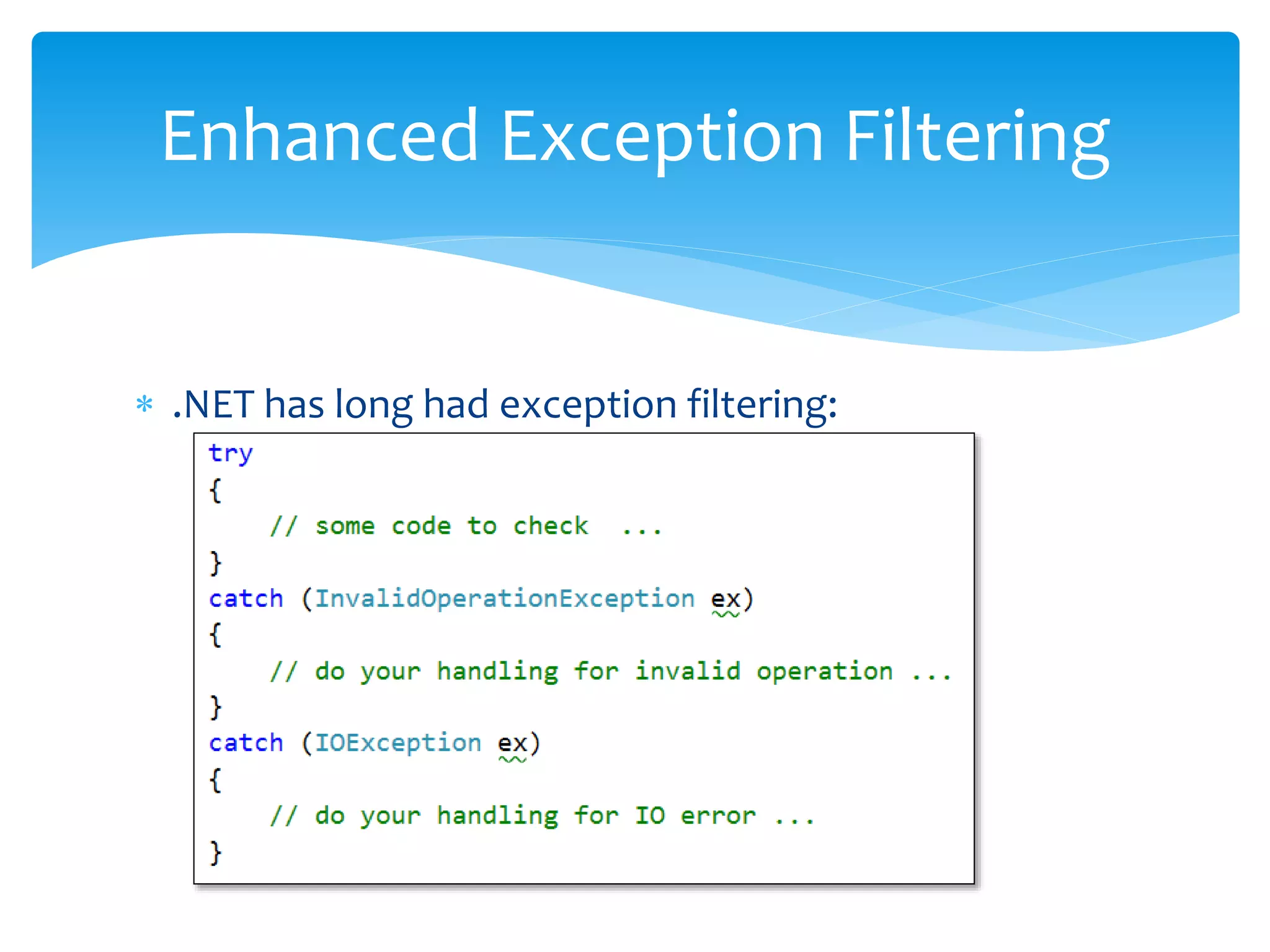



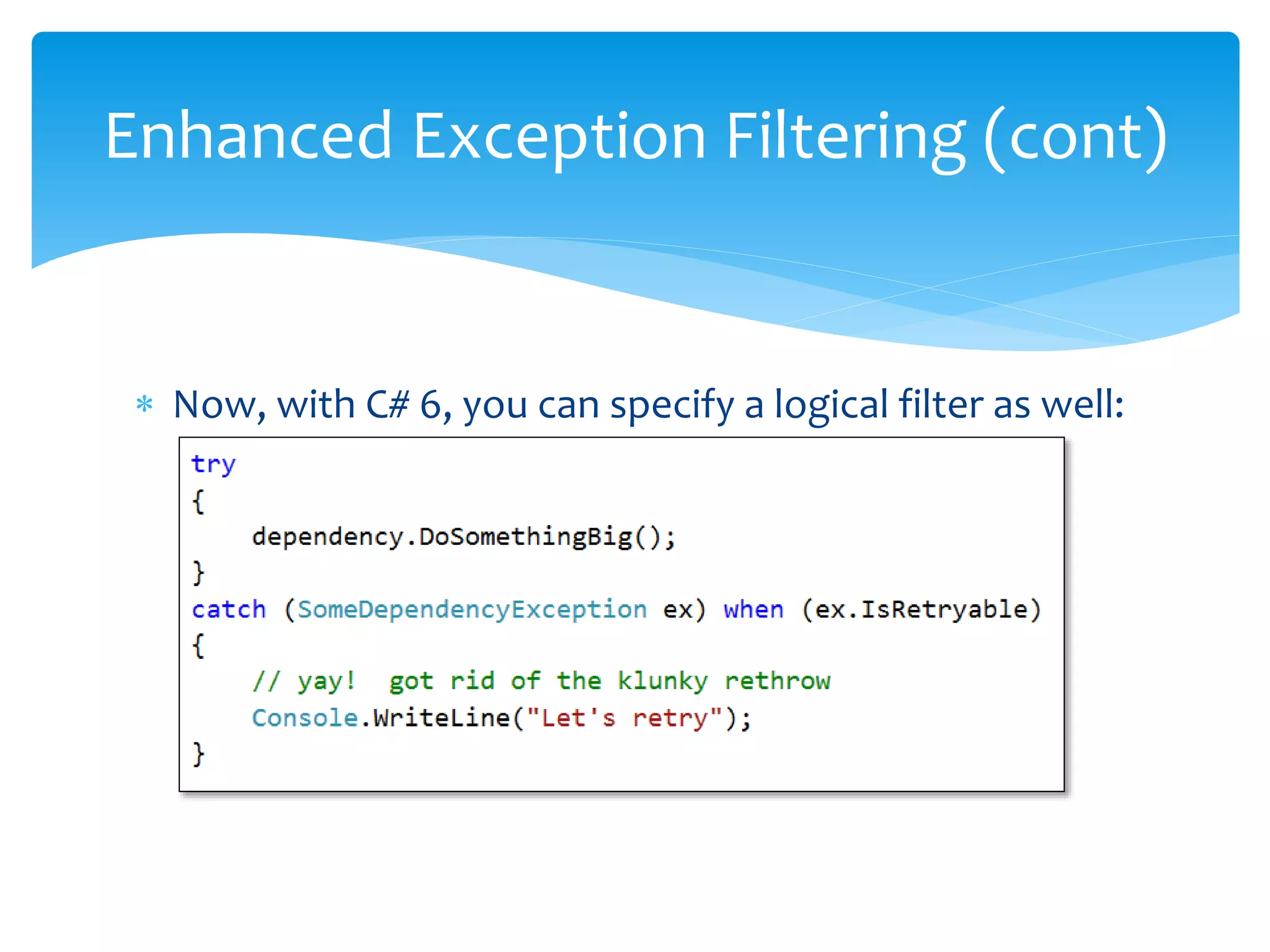

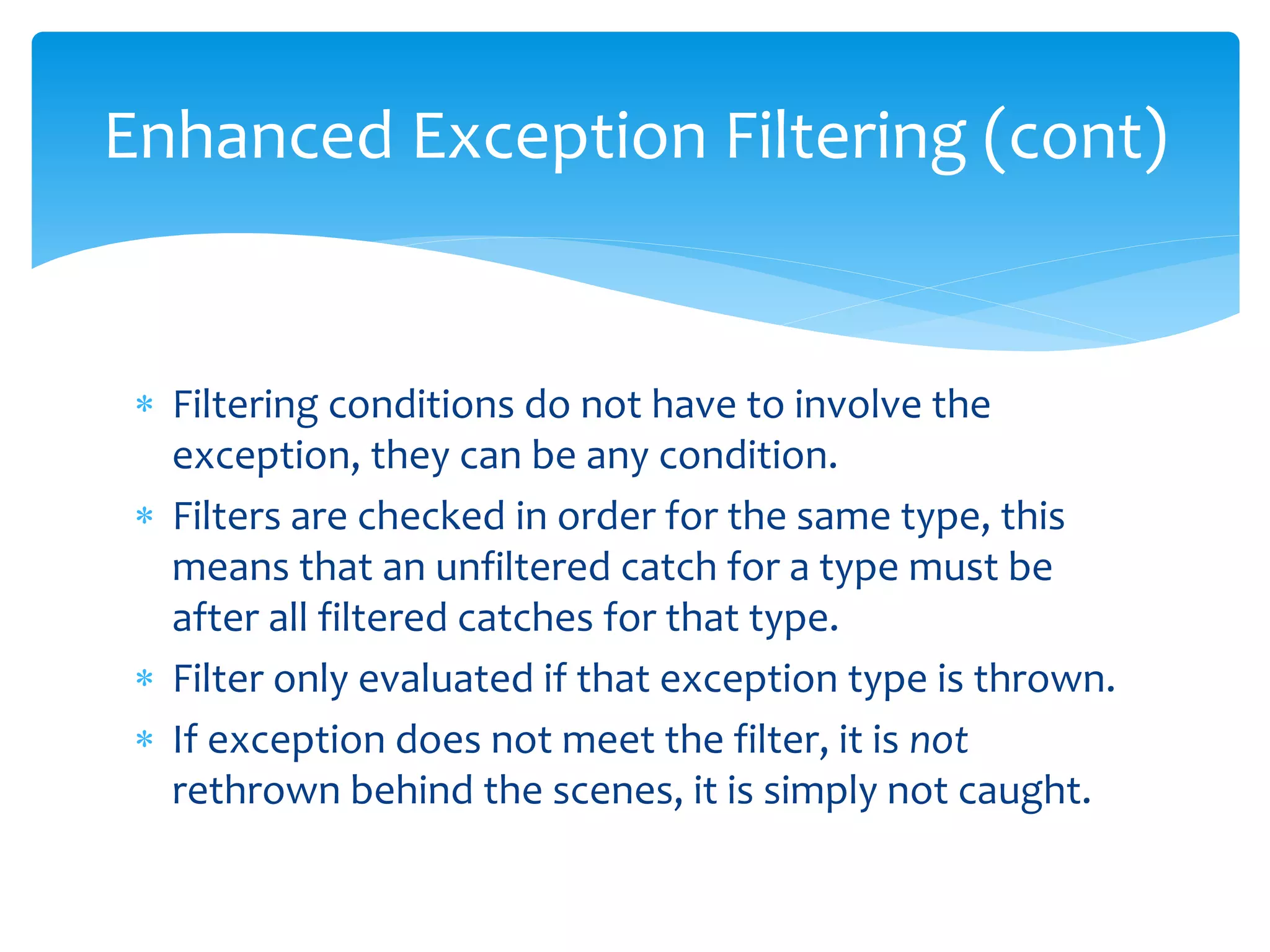
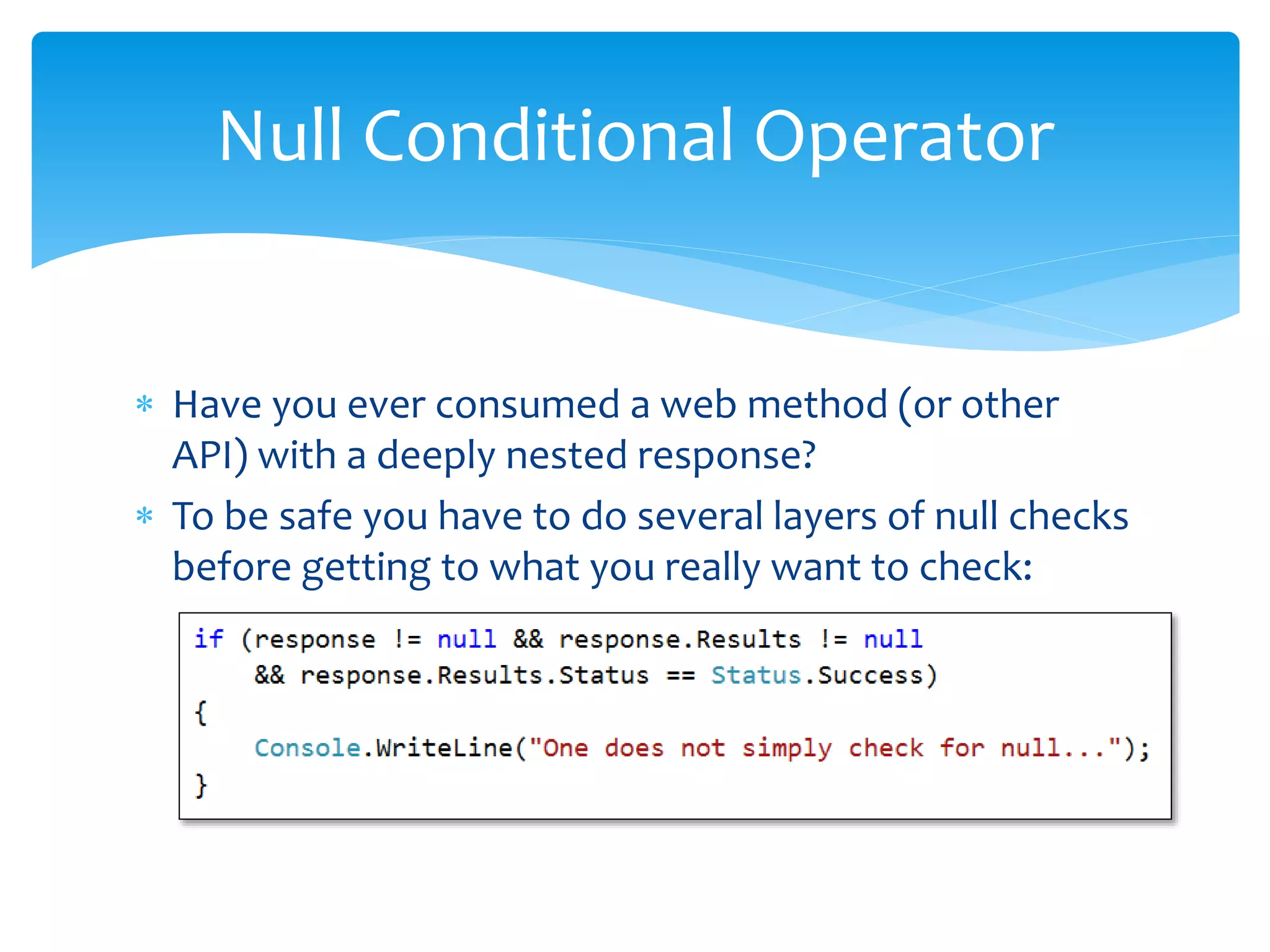
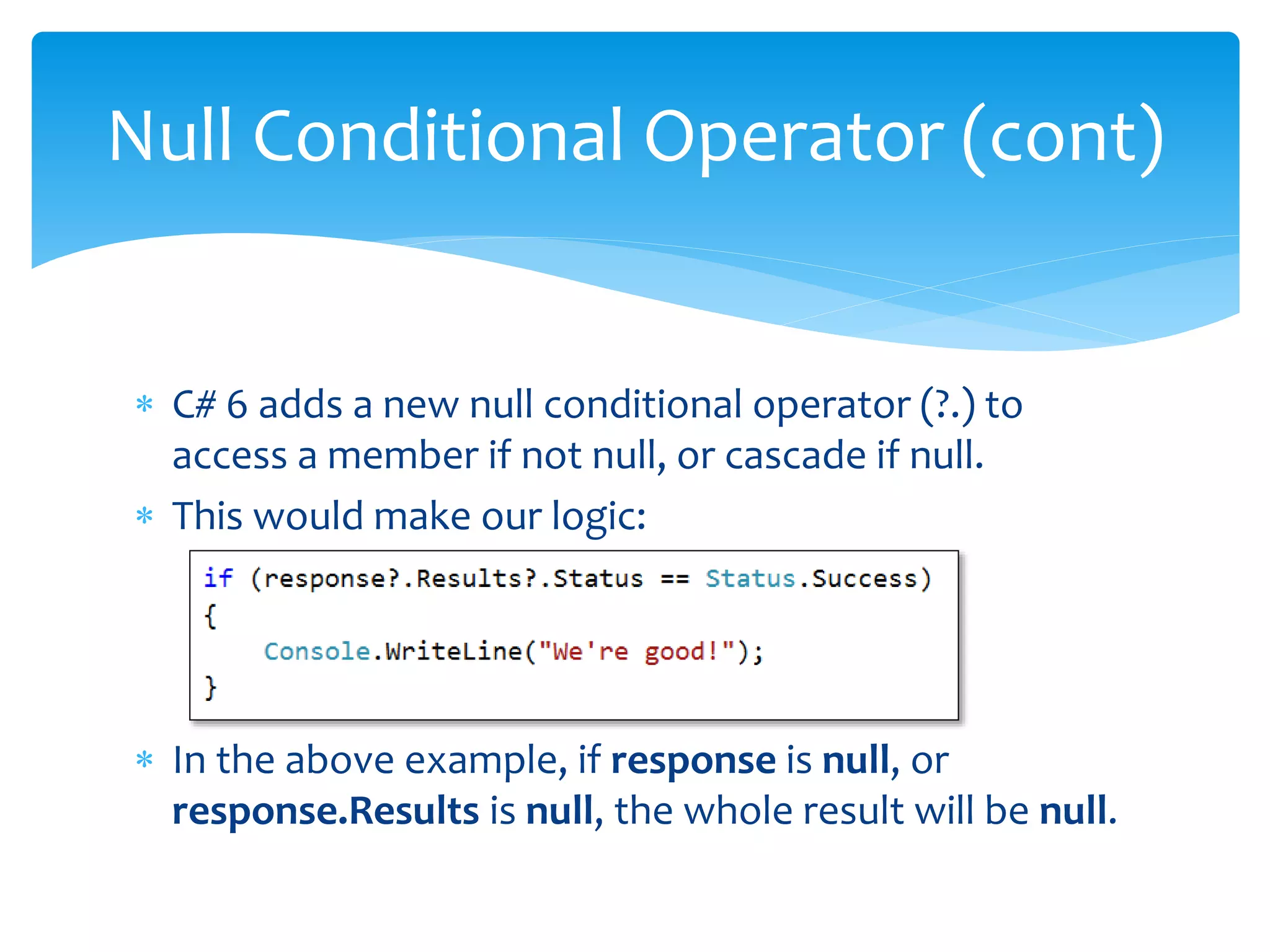

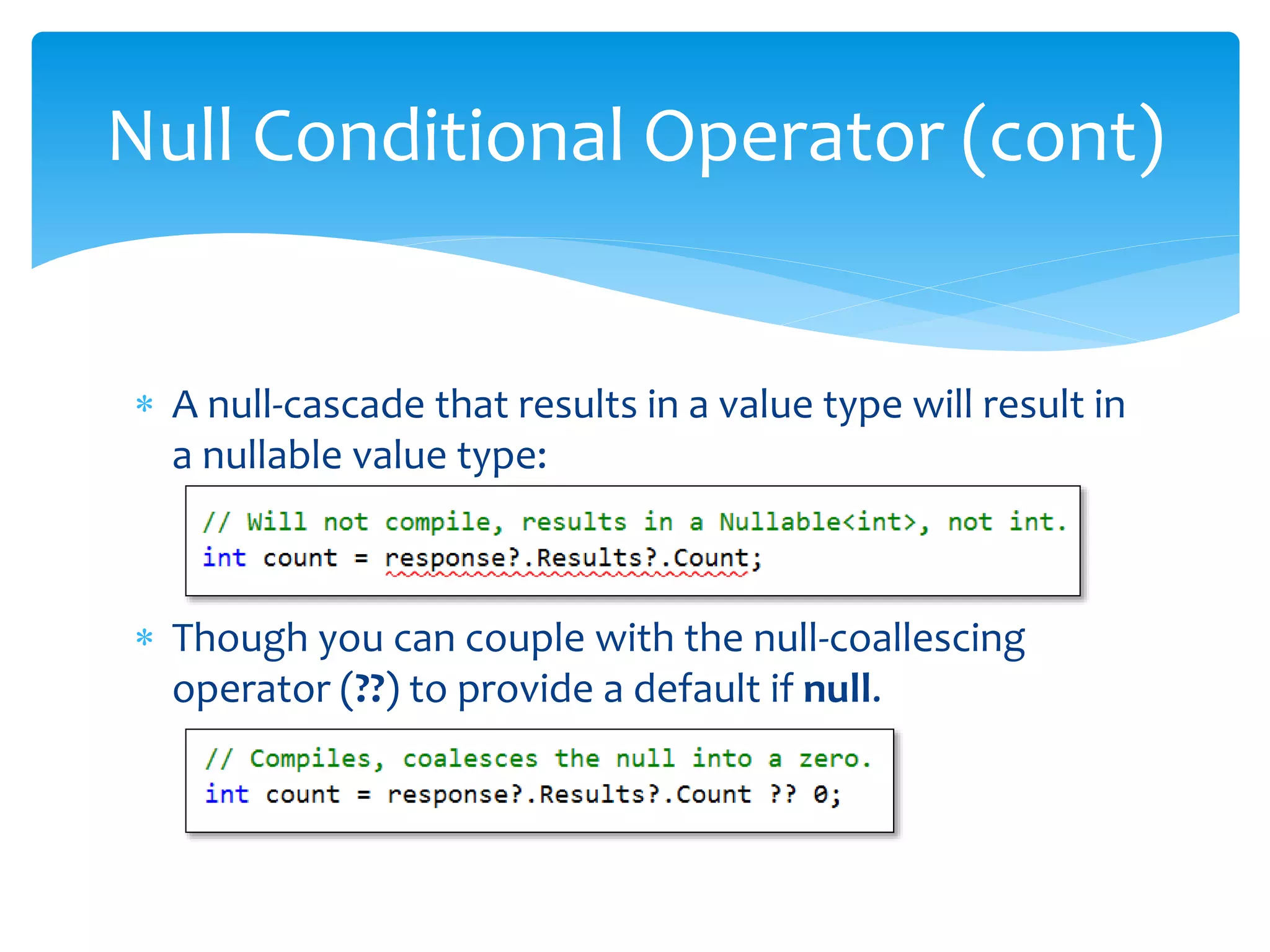


![ So what if you want to check for null before invoking
an indexer on an array, List<T>, etc?
C# 6 has a syntax for null cascade on indexers (?[…]):
Null Conditional Operator (cont)](https://image.slidesharecdn.com/thelittlewondersofcsharp6-150427141623-conversion-gate01/75/The-Little-Wonders-of-C-6-42-2048.jpg)

